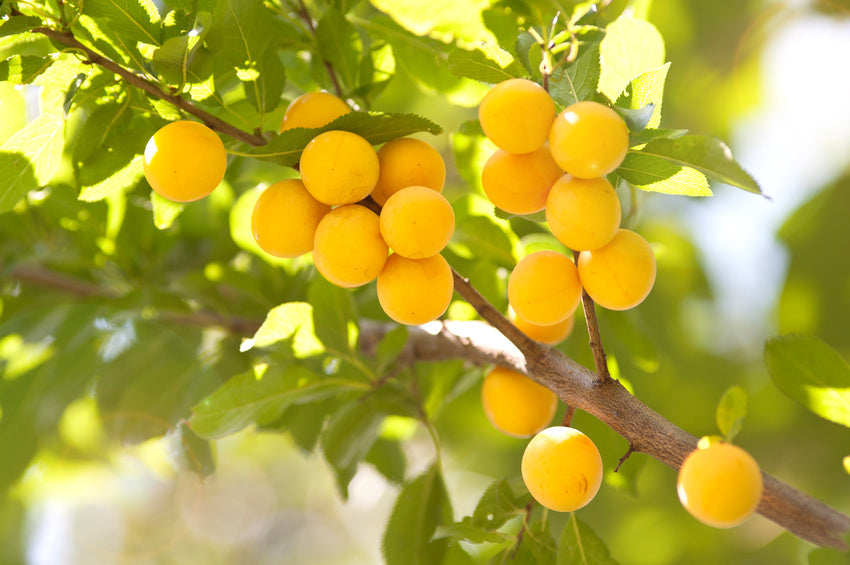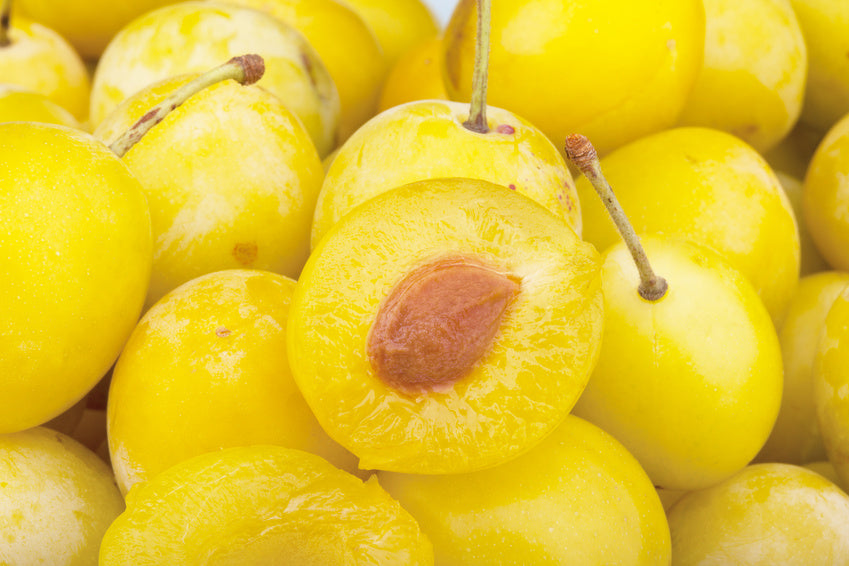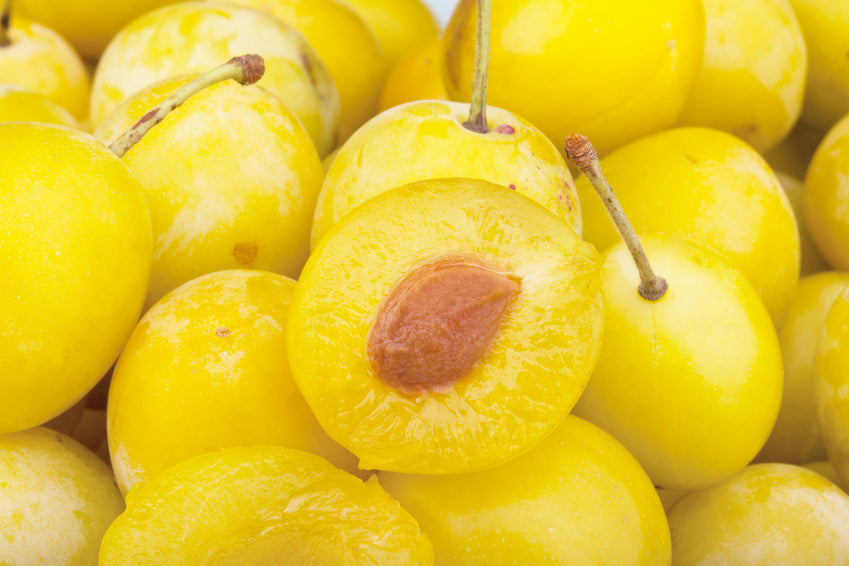Mirabelle plum (Prunus domestica)
In addition to the original name Mirabelle, this subspecies of plum is also known as “yellow plum”.

Cultivation – How does it work?
As usual, planting mirabelle plums in the fall or spring is recommended. Since most varieties are self-pollinating, a pollinator isn't absolutely necessary. However, pollinators generally help enrich the harvest and are therefore recommended.
Location – Where is best?
Overall, you should allow 20 square meters of space per plant for growing your mirabelle plums and expect them to reach a height of between 1.5 and 6 meters in later years.
The soil is best sandy to loamy, well-drained, and aerated. Make sure to keep it slightly moist.
The sweet mirabelle plums are true sun lovers and are therefore well suited to sunny and sheltered locations.
Care – What needs to be done?
Proper pruning and occasional thinning are essential for a successful and satisfying harvest. Because mirabelle plum trees are quite vigorous, they quickly develop a broad crown. Heavy rain, especially heavy rain, can also cause the fruit to burst more frequently.
Harvest – What should you consider?
Mirabelle plums are harvested in August and September. Mirabelle plums are known for their distinctive aroma. They separate easily from the stone and are ideal for both fresh consumption and further processing. The fruits can be used to make compote, jam, jelly, juice, and liqueur. Mirabelle plums can also be safely frozen.
Botany – What kind of plant is this?
The Mirabelle plum, a member of the rose family, is a yellow, spherical fruit about the size of a cherry. It is often slightly reddish on its sunny side.
The mirabelle tree is a thornless, sparse tree with annual hairy branches.

Cultural history – How did the Mirabelle come to us?
Because the Mirabelle plum is descended from the plum and likely arose as a result of several cross-breedings, its cultural history is difficult to trace. The Mirabelle plum probably originated in Asia Minor, from where it was brought to Italy by the Romans during their Crusade. From there, its great European journey began, as the Mirabelle plum quickly spread throughout Europe.
Varieties – Which are recommended?
The most popular varieties include:
– Mirabelle of Nancy: sweet, large, yellow, self-pollinating, good pollen donor
– Miragrande: juicy, large, robust, harvest time in September
TEXT: Carina Naeve








































































































